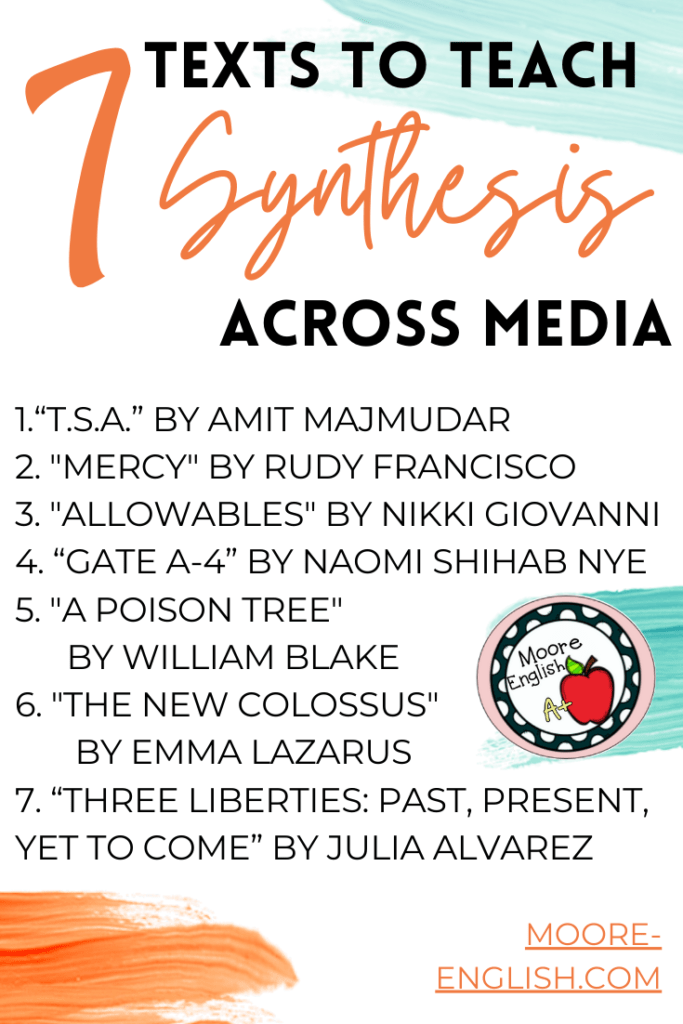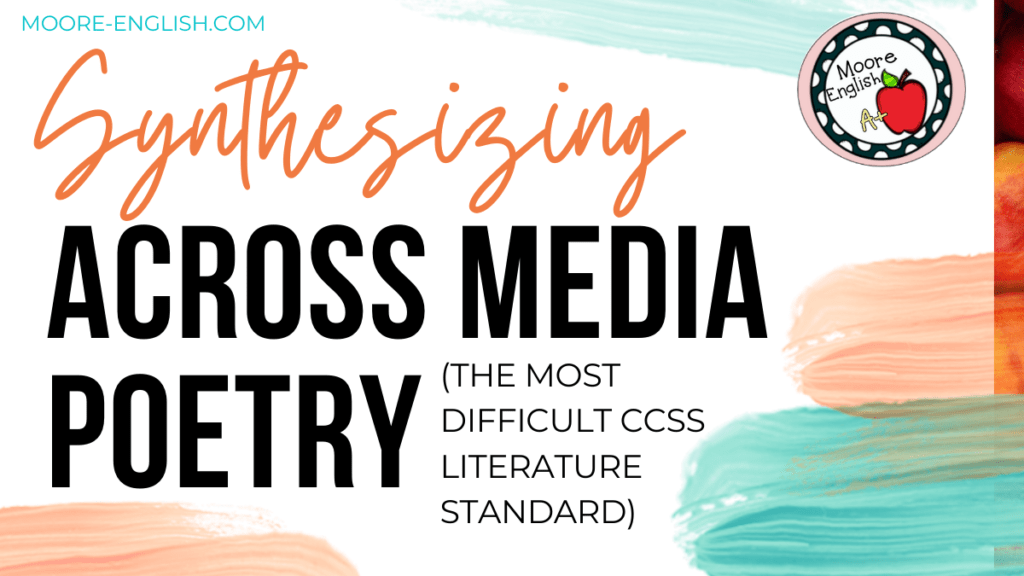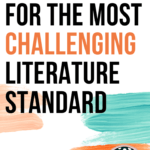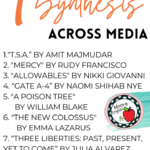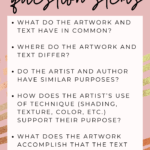Straight talk: I think CCSS.RA.7 is a beast. This standard challenges students to analyze and synthesize across mediums. As if that weren’t tough enough skill-wise, this is also a monstrous standard in terms of planning. Teachers have to choose texts carefully, making sure each text meets the needs of your students, time frame, and standard.
For years, I approached this standard by showing the film version of whatever novel my students were reading. This was a choice that covered a standard without really teaching it. As with most complex skills, synthesizing across media requires students to practice repeatedly. In other words, a one-off movie day does not cut it. Here are some better options for tackling this literature standard:
This post this post may contain affiliate links. Please read the Terms of Use.
Artwork
Artwork is my favorite way to tackle this literature standard. I enjoy using artwork for a few reasons:
- art is clearly a different medium
- artwork, like literature, has tone, mood, and purpose
- annotating art reinforces the practice of annotating text
- finally, artwork does not require the same kind of time consuming reading as engaging another print text
My favorite way to incorporate art is to find an artistic rendering of a well-known scene, allusion, or character. In fact, the Metropolitan Museum of Art has a collection of teacher resources. Similarly, the Smithsonian Institute has a significant collection of teacher resources.
Question Stems
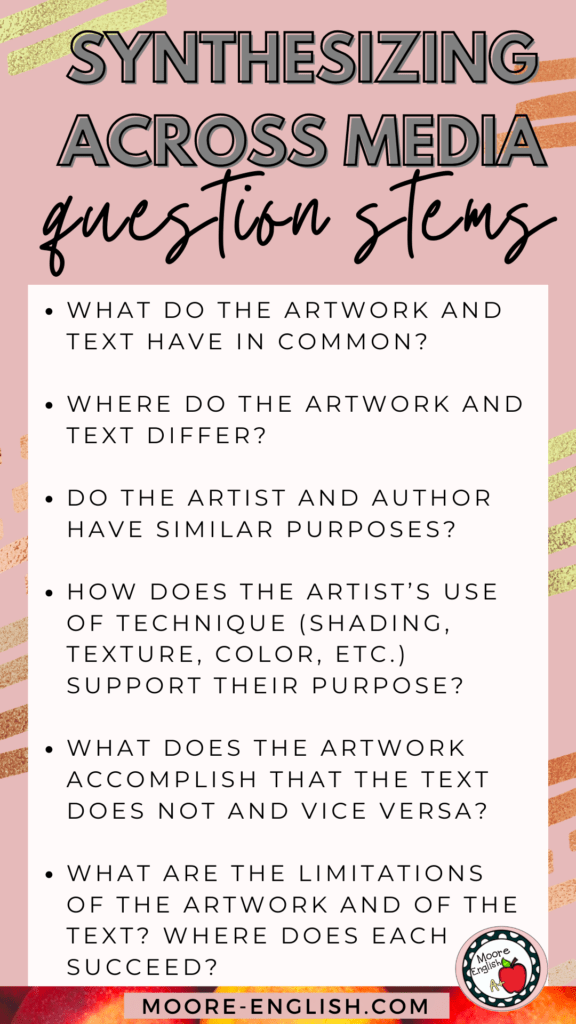
Once you find a piece of art that meets your needs, here are some question stems that help students think through an artist’s choices:
- What do the artwork and text have in common?
- Where do the artwork and text differ?
- Do the artist and author have similar purposes? How do you know?
- How does the artist’s use of technique (shading, texture, color, etc.) support their purpose?
- What does the artwork accomplish that the text does not and vice versa?
- What are the limitations of the artwork and of the text? Where does each succeed?
Here are some of my favorite text and artwork pairings:
- “A Poison Tree” by William Blake with images from his personal journals
- “The New Colossus” by Emma Lazarus with images of the Colossus of Rhodes or the Statue of Liberty
- Shakespeare’s plays are ideal for this activity because there are so many artistic interpretations of his plays, including paintings and sculpture. I’ve put together an entire collection of images and questions to help teachers and students use Shakespeare’s plays to tackle this literature standard.
- “Before a Painting” by James Weldon Johnson is an interesting title in that the poem never names its subject, so teachers or students can read the poem alongside a variety of pieces. Then, you can discuss how different images and paintings affect mood.
Creative Option!
Finally, teachers can take this activity to the next level by asking students to create their own artistic representations of literary works. Additionally, this gives students the chance to practice their own author’s craft of sorts. With this strategy, you can spend as much or as little time here as needed. This can be a simple five-minute drawing or a more elaborate creative opportunity.
Song Lyrics
Another way to target this literature standard is through music! Songs can touch on characters, themes, and ideas similar to popular and famous texts. For example, the song “Calypso” by Suzanne Vega reinterprets The Odyssey from a different perspective. Similarly, listening to jazz alongside The Great Gatsby or with poetry from the Harlem Renaissance is a great way to contextualize literature.
With this strategy, I really like to have students find their own song companions. This gives students a chance to bring their personality and interests into the classroom, takes some planning off my plate, and also helps students tackle this literature standard.
Multiple Interpretations to Meet the Literature Standard
Finally, the most comprehensive way to attack this standard is to look for multiple interpretations of a single symbol or allusion. Looking to the ancient classics often provides a lot of opportunities for this because these images have been revisited countless times.
When I set out to do this, I focused on a single symbol: Helen of Troy. There are more poetic interpretations of this poem than I could ever dream of bringing into my classroom. Some of them were too long, too tense, or too risque for the classroom. In addition to pairing the poems together, I doubled down on this standard and paired each poem with a classic artwork, too. Ultimately, I settled on this set of poems:
- “Helen of Troy” by Ella Wheeler Wilcox: This poem features consecutive English sonnets, making its structure as memorable as its central allusion.
- “Helen” by H.D. provides another interpretation of Helen’s actions and decisions. H.D. brings feminism to Helen in a way that empowers without abdicating any responsibility.
- “Helen” by Nikita Gill: My students know Gill’s work from social media, so they are engaged in her writing and excited to read a living poet’s work!
- “No Second Troy” by William Butler Yeats sees the author updating the Helen allusion to suit his historical context and purpose, providing students with a chance to see how allusions evolve overtime.
- “[To an army wife, in Sardis]” by Sappho, translated by Mary Barnard, is the oldest text in this collection, so it’s a great opportunity to bring classical literature into your classroom.
All 5 of these titles are included in my 11-12 Synthesizing Allusion Across Media Bundle. With the bundle discount, you get one of these poems for free!

